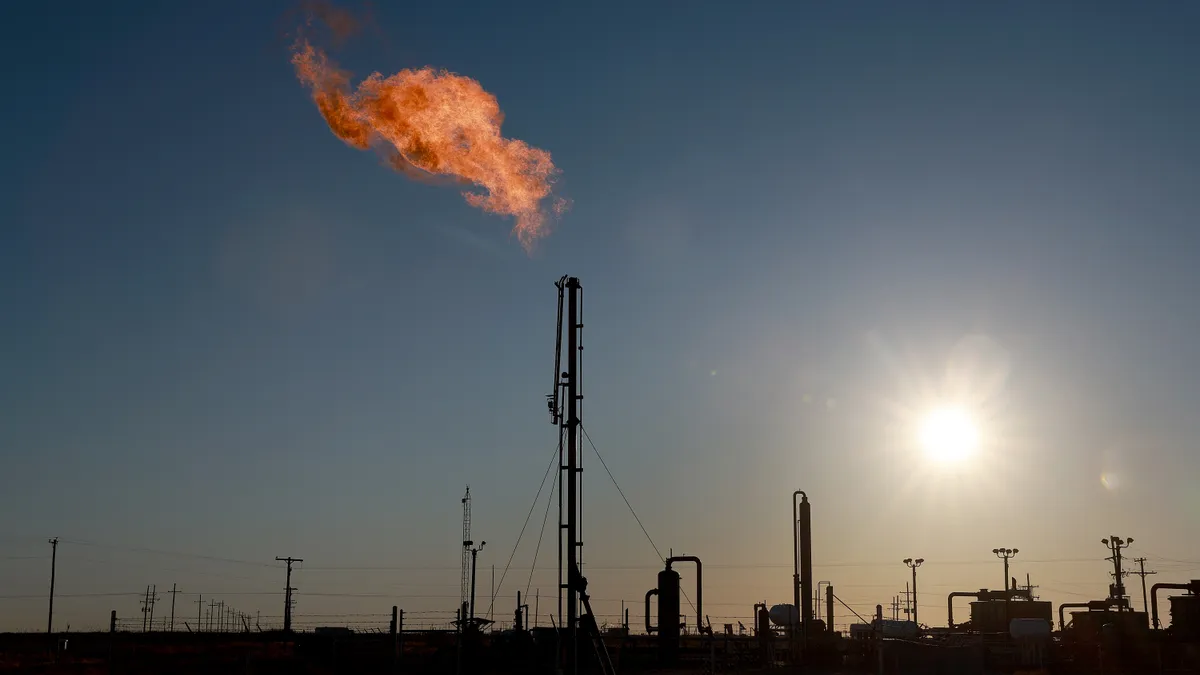Dive Brief:
- Chesapeake Energy and Southwestern Energy announced a $7.4 billion all-stock merger Thursday that, once complete, will create the largest natural gas producer in the United States. The combined company will be headquartered in Oklahoma City, Oklahoma.
- The deal is expected to close in Q2 of 2024 with an estimated combined value of $24 billion, and the company will take a new name once the deal closes. Chesapeake’s shareholders will own approximately 60% of the company, and Southwestern’s shareholders will own the other approximately 40%.
- The deal is the first major energy industry transaction of the year, and follows after 2023 recorded two of the largest M&A deals in sector history, with ExxonMobil’s $60 billion acquisition of Pioneer Natural Resources and Chevron’s $53 billion purchase of Hess Corp.
Dive Insight:
Chesapeake President and CEO Nick Dell’Osso, who will hold the same roles in the new combined company, said in the release that the transaction puts the new company in a position to be “the first U.S. based independent [oil producer] that can truly compete on an international scale.”
The oil producers’ combined portfolios have a net production of 7.9 billions of cubic feet equivalent per day of natural gas, with 15 years worth of inventory and more than 5,000 locations. The new company will look to expand the business to provide liquefied natural gas exports from a global trading presence based in Houston, Texas.
"The world is short [on] energy and demand for our products is growing, both in the U.S. and overseas,” Dell’Osso said in the release. “We will be positioned to deliver more natural gas at a lower cost, accelerating America's energy reach and fueling a more affordable, reliable, and lower carbon future.”
The companies expect the deal to result in operational synergies that will total around $400 million. The identified synergies will improve operating margins and efficient use of capital by lowering drilling and completion cost and utilizing shared operational infrastructure, among other advantages.
The new company will continue Chesapeake’s goals to achieve net zero scope 1 and scope 2 greenhouse gas emissions in its operations by 2035 and has pledged to be transparent in its disclosure on measurable sustainability targets, investments in low-carbon solutions and its work on the social and governance side of the equation.
The deal completes a triumphant four-year turnaround for Chesapeake, who filed for Chapter 11 bankruptcy in 2020 following a failed foray into crude oil. The energy company, once the nation’s second-largest natural gas producer, emerged a year later after shaving $7.7 billion in debt from its balance sheets, with a renewed focus on natural gas.
The merger has already been approved by the boards of both companies, and the new company’s board of directors will include 11 members: seven from Chesapeake and four from Southwestern. Mike Wichterich, who currently serves as chair of Chesapeake’s board, will become the non-executive chair of the combined company’s board.
The two companies said their existing portfolios in the Haynesville, Louisiana, basin and in the Appalachian basins in Ohio, West Virginia and Pennsylvania are highly complementary assets that will improve the operational scale and give the new company more flexibility in its capital allocation.
The deal will need to survive regulatory scrutiny, which has heightened on the industry after Exxon’s and Chevron’s separate acquisitions last year. Environmentalists and sitting U.S. Democratic Senators alike sounded the alarm after the proposed mergers and asked the FTC to look into the transactions, as groups including Greenpeace USA, the League of Conservation Voters and the Sierra Club alleged both companies have a documented history of price-gouging.











